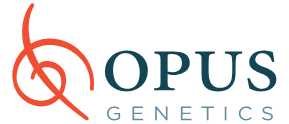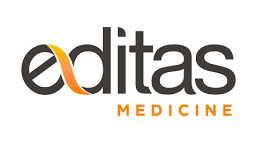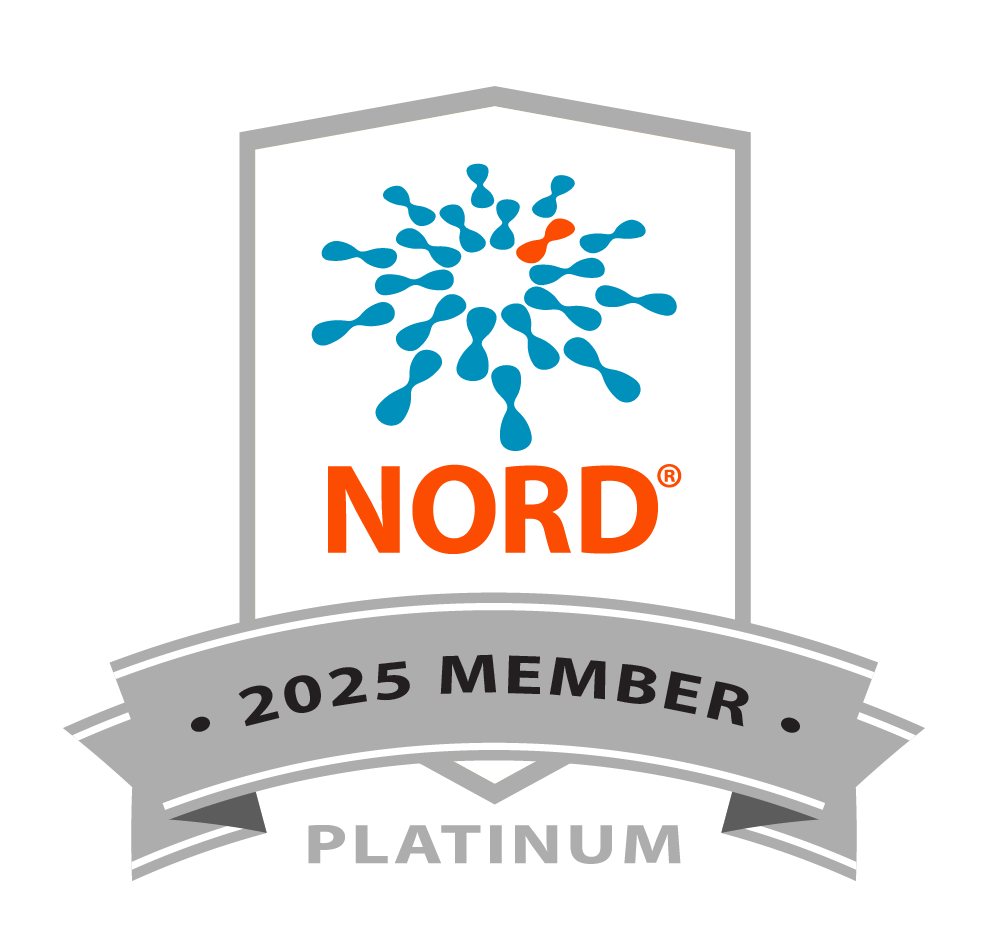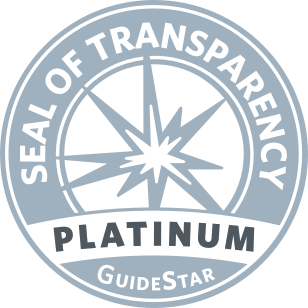Foundation Summit Highlights Robust Growth in Commercial Development for Retinal Disease Therapies
Foundation News
The Foundation’s Investing in Cures Summit (ICS), held on April 2, 2022, in Half Moon Bay, California, convened 175 researchers, industry executives, and constituents to present and discuss the expanding and accelerating commercial development of emerging therapies for retinal degenerative diseases.
The Foundation’s Investing in Cures Summit (ICS), held on April 2, 2022, in Half Moon Bay, California, convened 175 researchers, industry executives, and constituents to present and discuss the expanding and accelerating commercial development of emerging therapies for retinal degenerative diseases.
The event featured panel presentations on a broad range of modalities, including -- gene- and mutation-specific therapies, cell-based treatments, and mutation-agnostic neuroprotective and optogenetic approaches – as well as perspectives on the research and investment climates.
“We are in a truly exciting time with dozens of retinal-disease therapies in human studies and many more poised to move into the clinic,” said Benjamin Yerxa, PhD, chief executive officer, Foundation Fighting Blindness. “This boom in clinical development is being led by investments from our large industry partners such as Janssen and Genentech-Roche, along with Foundation-backed start-ups such as Vedere, Atsena, Nacuity, and SparingVision.”
Claire Gelfman, PhD, chief scientific officer at the Foundation, opened the meeting with an overview of the retina and the different therapeutic approaches featured during the Summit. “Inherited retinal diseases are genetically diverse with more than 300 genes, which when mutated, cause varying rates and forms of progressive vision loss. That means we need a broad portfolio of options to help all those affected,” she said. “But we are meeting the challenge because the retina is a small and accessible target, making it an ideal proving ground for neurodegenerative therapies. That’s attracting a lot of investment and interest in our space.”
Dan Day, a National Foundation Trustee, described the Summit as “energizing.” He said, “Those of us involved with the Foundation for more than a decade or two have seen the Foundation evolve from a basic research-oriented organization to now being focused on bringing that research into the clinic and turning it into cures and treatments. Hearing so many clinical trial investigators describe such encouraging progress fills me, and I know many others, with genuine hope. The day when we will restore sight for many affected people is now much closer at hand.”
Inherited retinal diseases affect 200,000 people in the US and more than 4 million people worldwide. Age-related macular degeneration (AMD) is the leading cause of blindness in seniors, affecting 11 million in the US and 170 million globally.
Summaries of Presentations and Panels
Genetic Testing and Validation for Retinal Diseases
Emily Place, MS, LCGC, a genetic counselor at Mass Eye and Ear, reviewed the work of ClinGen, an NIH-funded resource that defines the relevance of genes and genetic variants to diseases.
ClinGen’s 25-member Retina Gene Curation Group looks at the genetic and functional evidence of genes’ associations with inherited retinal disease. Expert panels within the Group classify each genetic variant as: pathogenic, likely pathogenic, variant of unknown significance, likely benign, or benign. Classified variants are then catalogued in ClinVar, a free, publicly available, and catalogue of gene variations. ClinVar is an invaluable resource, widely used by researchers, clinicians, genetic counselors, and therapy developers to understand a gene mutation’s relevance to disease, as well as its potential as a therapeutic target.
Optogenetics: A Promising Approach for Overcoming Advanced Vision Loss
Moderated by Ben Shaberman, MS, MA
Most people with advanced vision loss from a retinal degenerative disease have lost most or all of their photoreceptors. Optogenetics is an approach that restores vision by harnessing other surviving cells in the retina – namely, ganglion cells or bipolar cells. The approach is designed to work independent of the mutated gene causing the retinal disease. Optogenetic therapy developers GenSight and Bionic Sight were unable to attend the ICS, but have reported some modest vision improvements in their respective early stage clinical trials.
Samararenda Mohanty, PhD, founder and president at Nanosope Therapeutics, presented his company’s optogenetic therapy for RP, Stargardt disease, dry AMD, and potentially other retinal conditions. Nanoscope’s treatment is in a Phase 2 clinical trial in the US, and expresses a multi-characteristic opsin, a light-sensitive protein that is thought to be more responsive to natural light than microbial opsins used in other optogenetic approaches.
Brian Strem, president and chief executive officer at Kiora Pharmaceuticals, described his company’s molecular photoswitch, which bestows light sensitivity to surviving retinal ganglion cells. The drug is administered through intravitreal injections, which need to be performed at regular intervals. Though these regular injections are required because the drug washes out over time, the treatment dosing can be modulated to best suit the patient. Technically, the approach isn’t optogenetic because no gene is used, but it is designed to achieve the same vision-restoring goals of optogenetic therapies. The company is planning to launch a Phase 1b clinical trial for the emerging treatment in 2022. The Foundation funded earlier lab studies of the approach at UC Berkeley.
John Flannery, PhD, a Foundation-funded professor at UC Berkeley, co-founder of Vedere Biosciences, and member of the Foundation’s scientific advisory board, reviewed two optogenetic approaches he’s developed that have been part of Vedere Bio’s pipeline. (Vedere is a company in the Foundation’s RD Fund portfolio.) Its original optogenetic therapy expresses a medium-wave green cone opsin that is thought to be more responsive to natural light than other optogenetic alternatives. In late 2020, Novartis acquired Vedere and that original cone opsin-based therapy. Subsequently, Vedere II, a new company, was launched to advance an optogenetic therapy that combines an opsin-like protein with a chemical photoswitch to potentially provide an even better response, one that can be modulated, in natural light.
Cell-Based Therapies: Strategies for Vision Restoration
Moderated by Amy Laster, PhD
While cell-based therapies for retinal degenerative diseases haven’t advanced as far as genetic approaches, great progress has been made in recent years with the advent of clinical trials, especially for advanced dry AMD (aka, geographic atrophy or GA).
Kapil Bharti, PhD, a senior investigator at the National Eye Institute, described his Phase 1/2 clinical trial for retinal pigment epithelial (RPE) cells derived from induced pluripotent stem cells (iPSC), which are transplanted on a biodegradable scaffold to enhance survival and facilitate proper RPE orientation. The emerging treatment is for people with GA. The iPSC are produced by taking a small sample of blood from the patient, turning back the clock on the cells, so they revert to a stem cell-like state, and then coaxing them forward to become RPE. In the future, he plans to develop patches that include photoreceptors and the choroid, the outer layer of vasculature that provides oxygen and nutrients to the retina.
Dennis Clegg, PhD, a professor at UC Santa Barbara and founder at Regenerative Patch Technologies, reviewed the company’s 15-participant Phase 1/2 clinical trial for its RPE cell therapy for people with GA. The RPE cells are placed on a non-degradable scaffold made of “contact lens-like material.” He noted that 27 percent of patients had visual acuity improvements of five letters or more (per an eye chart), and 60 percent had stable or improved vision. Cells have survived at least two years in some patients.
Marie Csete, MD, PhD, chief executive officer at OkuloVision (formerly Conesight Therapeutics), reviewed the company’s emerging cone progenitor therapy targeted for people with cone dystrophies. The cone progenitors are stem cells whose (cone) fate has been determined, but can still proliferate. In animal studies, the cells engrafted well and improved vision and retinal sensitivity. The company believes the cells will work for people with advanced diseases. The initial clinical trial will take place at Doheny Eye Institute.
Marinna Madrid, PhD, co-founder and chief product officer at Cellino Biotech, reviewed her company’s technology for developing personalized cell therapies for a broad range of diseases, including retinal conditions. Cellino’s platform combines label-free imaging and high-speed laser editing with machine learning to automate cell reprogramming, expansion, and differentiation in a closed cassette format, enabling thousands of patient samples to be processed in parallel in a single facility.
Pete Adamson, PhD, is chief scientific officer at Tenpoint Therapeutics, a stealth-stage company dedicated to the creation of novel and innovative cell-based therapies for ocular diseases. The goal of the company is to have a transformational, cell-based asset in every ocular area where loss of cells leads to vision loss. Pete reported that cells have survived for more than five years for two patients in a Tenpoint trial of an RPE patch. Tenpoint is also developing a cone photoreceptor progenitor program.
Neuroprotection: The Quest to Preserve Sight
Moderated by Chad Jackson, PhD
Neuroprotection is the use of a drug or protein to preserve photoreceptors, thereby slowing vision loss in people with a broad range of retinal diseases. A key advantage of the approach is it is designed to work independent of the mutated gene causing the retinal condition.
Dan Chung, DO, MA, chief medical officer at SparingVision, described his company’s emerging neuroprotective therapy, known as rod-derived cone-viability factor (RdCVF), which was identified at the Institut de la Vision as a protein important for cone survival. The treatment, delivered as a gene therapy, holds promise for preserving vision in people with RP, Usher syndrome, and other conditions. A company in the RD Fund portfolio, SparingVision, plans to launch a clinical trial for RdCVF in 2022. The company is also developing a treatment to restore function to cone photoreceptors that remain alive but have lost their ability to process light.
Halden Conner, chief executive officer at Nacuity, reviewed the company’s lead drug, N-acetylcysteine amide (NACA), a powerful antioxidant for potentially slowing retinal degeneration and vision loss for RP, Usher syndrome, and other related retinal diseases. NACA is currently in a Phase 2 clinical trial in Australia for people with Usher syndrome. Nacuity plans to launch a clinical trial of NACA in the US in 2023 for people with RP. An investment from the RD Fund helped launch the company and clinical development of NACA.
Karsten Schmidt, PhD, senior vice president at Retrotope, presented his company’s emerging, oral therapy, a small molecule for dry AMD, which is designed to prevent the oxidation of docosahexaenoic acid (DHA), a protective lipid in the retina that gets rancid and toxic when exposed to oxidative stress. The ultimate goal is to preserve function of retinal pigment epithelial (RPE) cells which are critical to the health and function of photoreceptors.
François Paquet-Durand, PhD, chief scientific officer at Mireca Medicines, reviewed his company’s emerging therapy, which targets cyclic guanosine monophosphate (cGMP), a messenger molecule that is necessary for phototransduction (light processing) in the retina, but in excess, is toxic. Approximately 30 percent of RP patients have elevated cGMP, and, therefore, might benefit from the approach, which will be a slow release formulation delivered via intravitreal injection.
Dry AMD: A Therapy in Sight?
Moderated by Claire Gelfman, PhD
While several therapies have been FDA-approved for the wet form of AMD, dry AMD remains a major unmet need and a research focus of the Foundation Fighting Blindness. The session reviewed several emerging treatment approaches for geographic atrophy, the advanced for dry AMD, including two that are in Phase 3 clinical trials, as well as a new dry AMD mouse model.
Lukas Scheibler, PhD, chief innovation officer at Apellis, reported on his company’s two Phase 3 trials for pegcetacoplan, a molecule that targets the C3 protein in the complement system, a part of the innate immune system which is overactive and damaging in people with AMD. The company is applying for FDA approval for pegcetacoplan for GA. In its OAKS trial, monthly injections of the treatment reduced GA lesion growth by 22 percent at 18 months. In its DERBY trial, monthly injections reduced lesion growth by 13 percent at 18 months.
Pravin Dugel, MD, president of Iveric Bio, discussed the company’s C5 complement inhibitor, Zimura, which is in a Phase 3 clinical trial for people with GA. Iveric plans to report data from the trial by the end of the year. He explained that GA usually starts outside the fovea, a small pit in the center of the retina that provides the sharpest vision. The goal of treatment is to slow GA lesion growth to delay encroachment into the foveal region. Zimura is delivered by intravitreal injection (monthly or every other month).
Maria Maqsood Khan, MD, at Ionis Pharmaceuticals, described the company’s antisense oligonucleotide, a tiny piece of DNA that targets RNA – the retinal cells’ genetic messages – to inhibit the expression of the Factor B complement protein, which is implicated in AMD. The company, which recently announced a collaboration with Roche, is in a Phase 2 clinical trial for GA. The treatment is delivered every four weeks by subcutaneous injection.
Gary Hogge, DVM, PhD, senior vice president of clinical and medical affairs at Lineage Cell Therapeutics, reviewed the company’s emerging retinal pigment epithelial (RPE) cell transplant therapy for GA. RPE, which are a critical support system for photoreceptors, are affected and degenerate first in dry AMD. Ultimately, when RPE are lost, photoreceptors degenerate, and vision is lost. Lineage, in collaboration with Genentech, is conducting a 24-participant, Phase 1/2 clinical trial for the transplantation of RPE cells, and in interim results, reported retinal tissue restoration and improved vision for four participants.
Joshua Dunaief, MD, PhD, at Scheie Eye Institute, University of Pennsylvania, described his development of a mouse model for dry AMD – an important advancement, because there aren’t animal models that recapitulate dry AMD well. Dr. Dunaief’s approach involved the injection of iron, which is a potent generator of oxidative stress and induces complement activation. He also showed that deuterated DHA prevents iron-induced retinal degeneration. The project was conducted in collaboration with Retrotope.
Lunch Keynote: Manipulating the Retinal Blueprint through Optogenetics
Introduction Rusty Kelley, PhD, MBA
Ehud (Udi) Isacoff, PhD, a UC Berkeley professor of neuroscience and co-founder of Vedere, delivered the keynote address for ICS, reviewing the years of research with John Flannery and others at Berkeley that demonstrated vision restoration for the optogenetic approaches that are being developed by Vedere I (acquired by Novartis) and Vedere II. Optogenetics holds promise for restoring vision for people who have lost all their photoreceptors and vision.
Drs. Isacoff and Flannery had the goal of developing an optogenetic therapy that didn’t require goggles or glasses to boost the light intensity required for other optogenetic approaches to work properly. Those other options use microbial proteins to bestow light sensitivity to ganglion cells in the retina. In contrast, the Vedere options use opsins which are naturally occurring in the human retina.
The key to success for optogenetic therapies is that they: 1) work in natural light and 2) react quickly enough for patients to not have blurry vision when there’s movement or fast changes in the visual scene.
Dr. Isacoff showed that the Vedere I approach, which is a gene therapy expressing green cone opsin (an opsin that is natural in humans), worked well in natural light, provided some visual acuity and object recognition, and was able to effectively capture movement.
Even better was the Vedere II approach, which included an opsin-like protein combined with a photosensitive chemical. The challenge of this approach is that it requires regular injections of the photochemical – perhaps every six weeks. The benefit of the approach is that it is modifiable – it can be turned on and off if need be – and it can be upgraded as better photochemicals are developed.
Vedere II is a company in the Foundation’s RD Fund investment portfolio.
Genetic Therapies: Looking Beyond LUXTURNA®
Moderated by Jason Menzo
The burgeoning field of retinal therapies targeting specific genes and mutations was highlighted by six ICS panelists representing companies with a diverse range of disease targets and treatment modalities.
Ash Jayagopal, PhD, chief scientific officer at Opus Genetics, reviewed the company’s first three gene therapy development projects, all of which target forms of Leber congenital amaurosis (CA): LCA5, RDH12, and NMNAT1. Opus was launched by the RD Fund, the Foundation’s venture philanthropy fund for advancing treatments into and through early stage clinical trials. The company is planning to start a clinical trial for the LCA5 gene therapy this year.
Linda Couto, PhD, chief scientific officer at Atsena Therapeutics, discussed the company’s first gene therapy candidate – targeting GUCY2D mutations causing LCA1 -- to move into a clinical trial. The treatment showed encouraging signs of efficacy for the first patients in the Phase 1/2 trial. Atsena is also conducting IND-enabling studies for an X-linked retinoschisis gene therapy to gain authorization for a clinical trial. The company is also in preclinical development of an Usher syndrome 1B (USH1B) gene therapy which uses dual vectors to deliver the MYO7A gene, which is too large for typical viral-based gene delivery systems.
Sue Washer, MBA, chief executive officer at Applied Genetic Technologies Corporation (AGTC), reported that the company is moving into a Phase 2/3 clinical trial for its X-linked retinitis pigmentosa (XLRP-RPGR) gene therapy and planning for further clinical development for its achromatopsia (CNGB3) gene therapy after encouraging results in a Phase 1/2 trial. AGTC is also developing a gene therapy targeting CFH, a protein in the complement system, for people with dry AMD.
Peter Francis, MD, PhD, chief scientific officer at 4D Molecular Therapeutics (4DMT), reviewed the company’s two promising gene therapy programs in Phase 1/2 clinical trials – for XLRP-RPGR and choroideremia – as well its preclinical development for wet AMD and RP (RHO) gene therapies. 4DMT uses a technique called directed evolution to design viral vectors for gene delivery that can better target retinal cells and do so through intravitreal injections, which are less invasive than subretinal injections.
Mark Shearman, PhD, executive vice president and chief scientific officer at Editas Medicine, discussed the company’s CRISPR/Cas9 gene-editing therapy for LCA10 (common CEP290 mutation), which was the first of its kind to be administered to the human body. CRISPR/Cas9 works like a pair of molecular scissors to cut out the mutation in the gene. Editas’ emerging treatment improved vision for the first two of three patients in a Phase 1/2 clinical trial. Editas is also in preclinical development for CRISPR/Cas9 treatments targeting USH2A (exon 13) and autosomal dominant RP (RHO).
Gerard Caelles, chief business officer, SpliceBio, discussed the company’s emerging technique called protein splicing for overcoming the capacity limitations of typical adeno-associated viral (AAV) gene delivery systems. In protein splicing gene delivery, genes are delivered in two packages, and they express two “halves” of a protein which are combined in the cell to form a full-length, functional protein to augment the missing protein. SpliceBio is targeting Stargardt disease, which is usually caused by mutations in ABCA4, a gene too large for current AAV gene delivery systems.
Investing in IRD Cures
Moderated by Peter Ginsberg, MBA, and Rusty Kelley, PhD, MBA
A panel of three leading life-science investors – Sarah Bhagat, PhD, of Sofinnova; Sung You, MBA, of PBM Capital; and Victor Chong, MD, of Janssen – discussed the current opportunities and challenges in investing in IRD therapy-development companies.
Of note, Sofinnova is an investor in Atsena Therapeutics, a gene therapy company in the Foundation’s RD Fund portfolio. Also, PBM Capital is an investor in SalioGen, a gene coding biotech in the RD Fund. The RD Fund, the Foundation’s venture philanthropy fund, has nearly $120 million in investments. Gordon Gund, a Foundation co-founder and chairman emeritus, and Paul Manning, chairman and chief executive officer of PBM Capital, are the lead RD Fund investors.
All panelists agreed that the current climate for biotechnology investing has cooled from where it was a few months ago, though the retina remains a compelling sector because of powerful gene- and cell-based technologies and the unmet patient need, which is a priority for all of the panelists’ firms/companies.
They also discussed whether start-up companies should build their own manufacturing facilities or outsource manufacturing. The cost of gene therapy and cell manufacturing can rival therapy development costs, and producing a therapy to meet the high standards for human studies is crucial to success. By outsourcing manufacturing, a company may minimize the cost but lose control of production quality. Alternatively, manufacturing in-house requires large investments in talented people and equipment.
The panelists also talked about the pros and cons of companies staying private (and raising private capital) to maintain greater control of their business versus raising money through an initial public offering (IPO), which could potentially lead to a large influx of capital but relinquishes more control over to shareholders.
All agreed that the biggest challenge in the biotech sector is the shortage of human capital. “The absence of human capital is the biggest problem…it’s the need for extraordinary people at every step of the way,” said Dr. Bhagat. “You just can’t create people with decades of experience in a year.”
Fireside Chat: From Bionic Eyes to BioBonds and Beyond
Moderated by Ben Yerxa, PhD, and Adrienne Graves, PhD
Karen Petrou and Eugene de Juan, Jr., MD, two innovative luminaries in the Foundation Fighting Blindness family, shared their thoughts on retinal research, its promise, and their own relationships to retinal disease and blindness.
Karen, who co-founded Federal Financial Analytics with her late husband, Basil, is a renowned expert in federal financial policy who also happens to be blind from RP. She and Basil developed the concept of BioBonds, which is now legislation (HR 3437) introduced in the House of Representatives that would provide low-interest, long-term loans to companies moving a broad range of medical therapies into clinical trials. The concept addresses the overwhelming need to advance more research out of labs into clinical trials and out to the millions who need treatments and cures for myriad diseases. Because the loans need to be paid back by the recipients, the bill would not significantly increase the taxpayer burden.
Also a board director for the Foundation, Karen reflected on the challenge of moving through her career as a woman with visual impairment. “Having dealt with the reality of being the only girl in all my classes, visual impairment was a much more profound stereotype. I’ve moved through it and hoped the substance would carry me forward, and it did. The only way to go is to keep on trying.”
An innovator of numerous ocular treatments and technologies, Dr. de Juan was one of the original developers of the technology that ultimately became the Argus II Retinal Prosthesis System, the first FDA-approved bionic retina. Among his many executive roles, he is on the board of directors of the Foundation’s RD Fund.
He was inspired to become an ophthalmologist because his father practiced ophthalmology in their hometown of Mobile, Alabama. But it was a seemingly routine patient encounter early in his career that set him on an entrepreneurial path. “Forty years ago, I was an ophthalmologist at Duke, when a mother brought in her blind infant who had retinopathy of prematurity. She asked if she could give an eye to her child. I said that we didn’t know how to do that, but not to worry, because we were working on it and it would be okay. But I didn’t know anyone working on anything. So I decided that’s what I needed to do, to work on it, because I wasn’t going to lie to a patient again. That’s when I came up with the initial idea of creating the bionic eye.”
Final Words
To close out ICS, David Nixon, a Foundation board director and co-founder of its genetic testing partner, InformedDNA, reflected on how multiple generations of his family were affected with AMD. And though there weren’t treatments for AMD at the time, the Foundation provided invaluable resources and information to help his family move forward.
David also asked everyone in the Foundation’s family to keep doing the critical work that needs to be done to win the fight, acknowledging the impressive progress and accomplishments already made. “I am truly inspired by the pace of innovation for inherited retinal disease. I have no doubt it is about “when,” not “if.” What once looked like science fiction is happening routinely in labs all around the world.”
Thanks to our Investing In Cures Summit 2022 Partners.
Venture Partner
Seed Partners
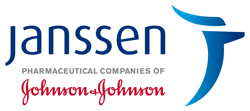
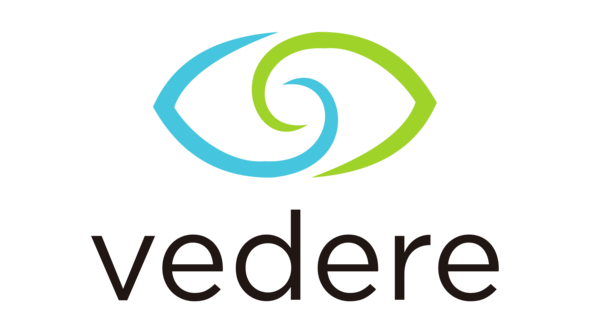
Angel Partners


